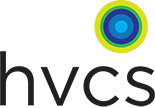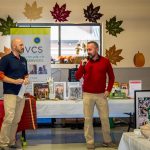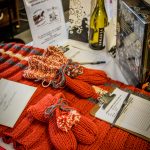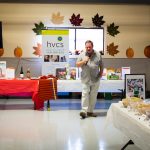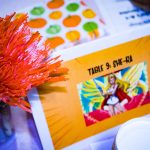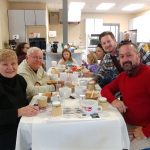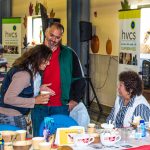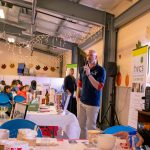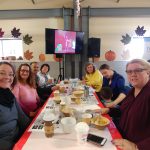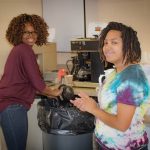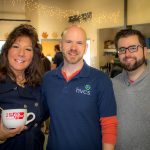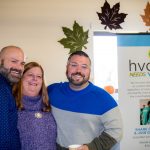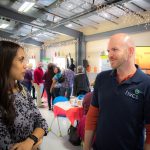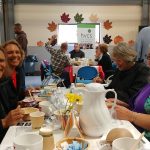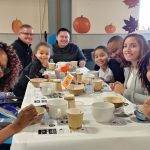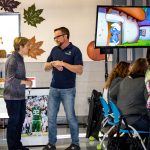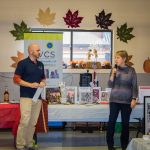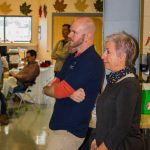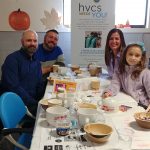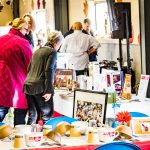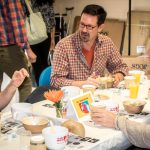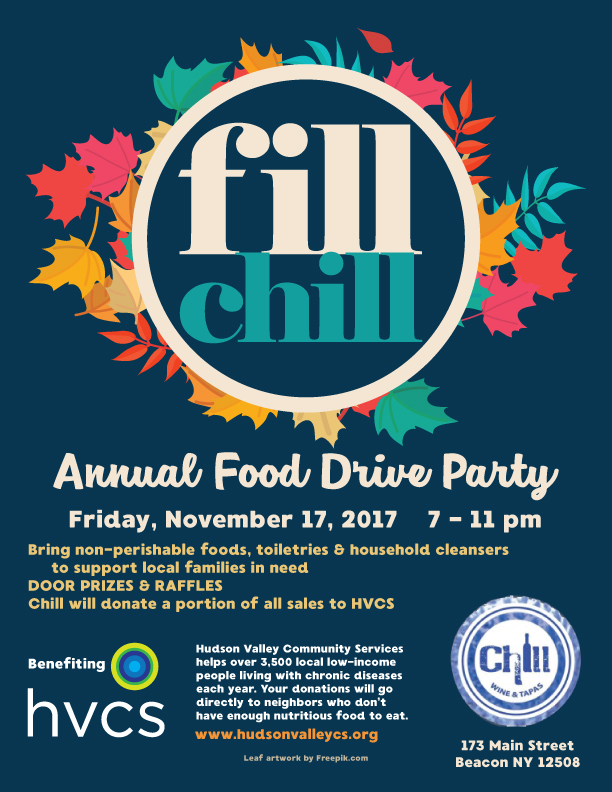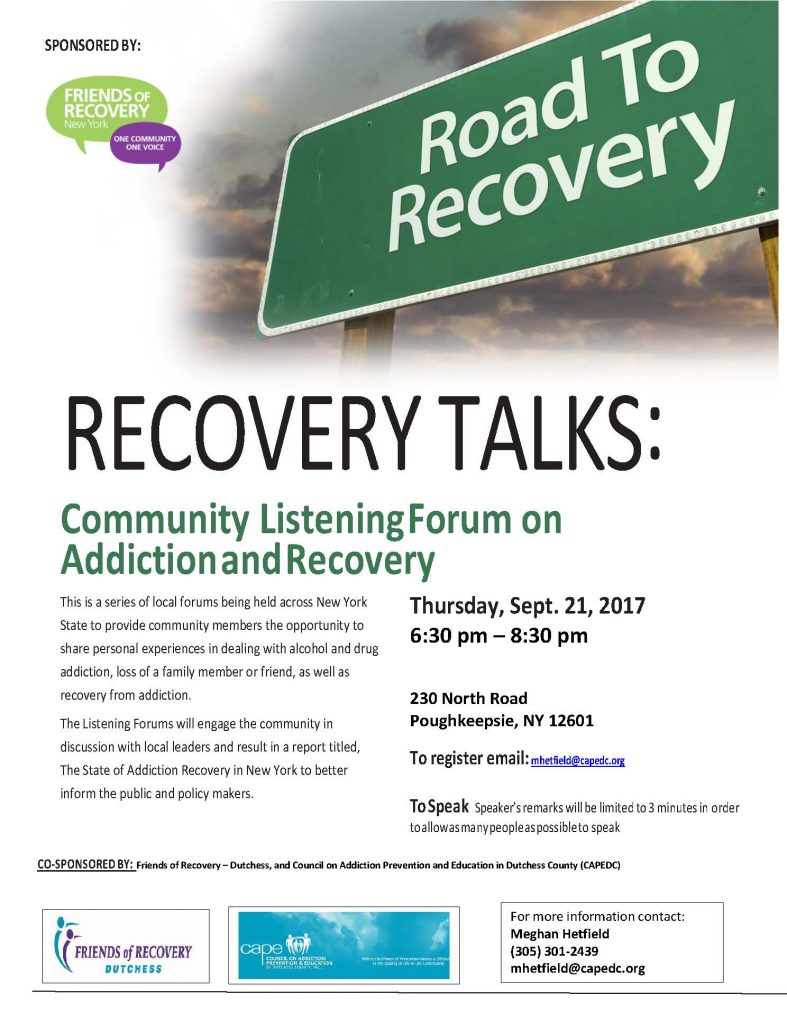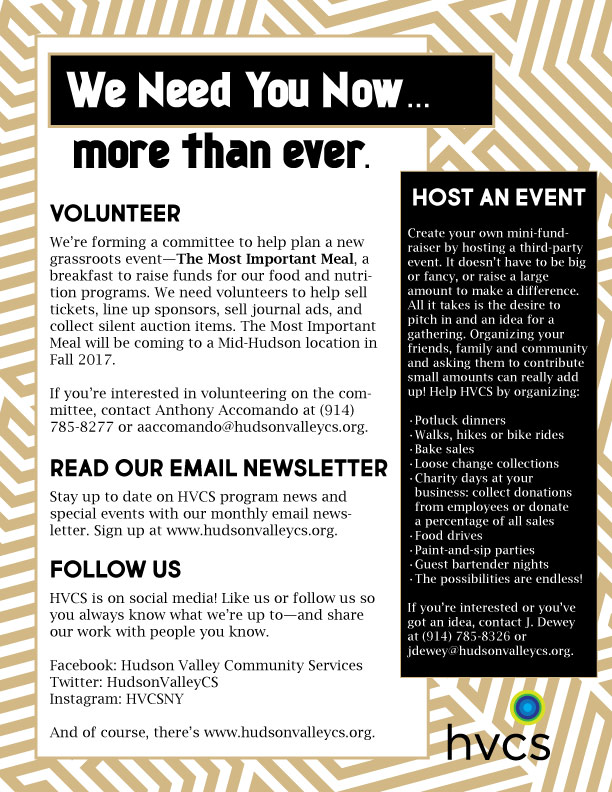Posts Tagged ‘special’
Testing All Queens 2017
Tuesday, November 28th, 2017Photos From The Most Important Meal
Monday, November 6th, 2017Thanks to everyone who made our new fundraising event, The Most Important Meal, a success! Photos by Anthony Accomando and Ryan Judge.
Fill Chill Annual Food Drive Party
Tuesday, October 3rd, 2017Plus, John Martin from Superior Sounds will be DJing!
Chill Wine Bar is located at 173 Main St., Beacon NY 12508.
Leaf circle artwork courtesy of www.freepik.com.
The Most Important Meal
Friday, September 22nd, 2017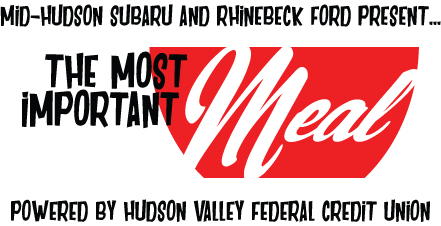 Help local people who are living with chronic illnesses get the nutrition and support they need to stay as healthy as possible!
Help local people who are living with chronic illnesses get the nutrition and support they need to stay as healthy as possible!
Join HVCS, Mid-Hudson Subaru, Rhinebeck Ford and Hudson Valley Federal Credit Union at the Fishkill Recreation Center on Saturday, November 4, 2017 from 9:30 am to 12 noon for a fun-filled breakfast blast from the past. Every ticket includes a commemorative souvenir bowl so you’ll always remember that the most important meal is the one you made possible for someone without enough food.
Fill up your bowl at the all-you-can-eat cereal and granola buffet including fun mix-ins, fruit, a variety of Hudson Valley Fresh milks and Dannon yogurt (gluten-free and vegan options will be available, too). You’ll also get bottomless coffee, tea and juice served by your table host. Watch some of your favorite Saturday morning cartoons and bid on fantastic silent auction items–all while raising funds for HVCS’ food and nutrition programs.
Our food and nutrition programs serve hundreds of people and families each year, but their government contracts can’t fully support them, or they rely entirely on support from caring people like you.
Can’t make it on November 4th, or want to make a donation to honor someone else! Send a Cereal-Gram! For a $50 donation, we’ll send you or someone you love a commemorative bowl with a mini box of cereal and boxed milk. Plus, your Cereal-Gram will feed a family for a week!
Get tickets via Eventbrite or visit our Facebook page!
Homegrown Fundraisers: You Can Be a Fundraising Superstar for HVCS!
Thursday, July 27th, 2017We’re sharing this article from The Chronicle of Philanthropy’s May issue because it’s in sync with a new initiative we’re starting here at HVCS. We’re encouraging our supporters to try their hand at a third-party fundraiser–which really means a small, personal fundraising event that you throw or do for your circle of friends and family. A third-party event can be a fantastic way to help HVCS’ clients without a ton of planning, worrying and overhead. From holding a potluck supper in your home to booking a paint-and-sip charity night to going on a hike, you can turn any event into a fundraiser with a little ingenuity. Check out our new guide to third-party events, and read on for more ideas.
Weddings. Birthday parties. Bike rides. Bake sales. Pub crawls.
More groups than ever are offering online tools to help supporters raise money through a widening variety of events, activities, or challenges that they conceive, organize, and manage themselves.
Paragliding all over the world? Why not raise money while you do it?
Giving up drinking for a month? Let’s set up a fundraising page for that.
The online tools make it easy for people to create their own pages and share them on social media or through email — creating new groups of supporters for nonprofits in the process.
Charities say they are facilitating these fundraising options to keep up with supporters’ shifting habits. Platforms like GoFundMe allow people to raise money in almost any way they want to, and nonprofits say they need to be just as flexible.
New platforms like DonorDrive and Blackbaud’s Everydayhero have allowed charities large and small to register these do-it-yourself events at low cost. For example, Everydayhero is free for nonprofits that use Blackbaud’s TeamRaiser software — which helps people raise money for charity through events organized by nonprofits — and about $1,000 for those that don’t. There’s also an administrative fee, usually around 5 percent, per transaction.
While the amounts raised usually are only a sliver of most charities’ overall contributions, grass-roots fundraising events offer big potential for acquiring new supporters. Their promise is limited only by nonprofits’ willingness and ability to help.
“It’s an emerging trend, fueled by technology and changes in how people communicate and run their lives in the digital age,” says David Hessekiel, president of the Peer-to-Peer Professional Forum, which provides resources for nonprofits that run events in which supporters raise money on behalf of nonprofit organizations.

Fast-Growing Trend
Just a decade ago, most nonprofits were cautious about liability issues related to outside supporters using logos and marketing materials in ways that might embarrass the organization, says Mr. Hessekiel.
Trailblazers included the St. Baldrick’s Foundation, which put on head-shaving events to support children’s cancer research, and Movember, which urges men to grow mustaches to raise funds for male health efforts. The St. Baldrick’s events raised $34.9 million in 2016, and Movember raised $17.2 million.
Those organizations were soon joined by other nonprofits big enough to have the staff and expertise to promote and oversee DIY events.
“For bigger charities, it’s pretty much expected now,” says Kevin Scally, director of digital marketing for Smile Train, which launched a donor platform last November with new features for its DIY fundraisers.
The technology boom has allowed smaller players to join the action in recent years using an expanding and diverse array of low-cost tools. However, the money from homegrown fundraisers doesn’t come free or without effort: Many groups devote significant staff time and marketing dollars to help supporters with their campaigns.
“There’s been a lot of disappointment” for groups that think DIY events generate easy money, says Mr. Hessekiel.
Attracting Younger Donors
Smile Train, a group that instructs doctors in how to help children in poor countries who need surgery to correct cleft lip, allows supporters to build profiles on its website that resemble social-network pages. Through the profiles, supporters can start their own fundraising campaigns and add a video, photos, and a description of their event. They can also comment on other people’s pages and share their fundraising events on Facebook, Twitter, and other social-media sites.
If the grass-roots event gets offline contributions, those can be logged into the online system to show gratitude to the donor.
So far, DIY fundraisers make up only a small percentage of the organization’s support. But Mr. Scally says it’s still vital to provide a way for Smile Train to accommodate anyone who wants to raise money. The organization hopes its DIY program will attract younger donors, he says. It seems to be doing just that; 48 percent of Smile Train’s DIY organizers are millennials, and 33 percent are from Generation X.
On the charity’s website, people can choose from a range of options, like athletic events or birthday celebrations in which guests are asked to give to Smile Train. They can also select the “get creative” option and come up with their own idea.
“It’s really important in today’s day and age to have a set of tools where people can go on and create things on their own,” Mr. Scally says. “You know how easy it is to set up a GoFundMe page. You know how easy it is to set up a Facebook profile. We tailor our tools to be similar to that type of sign-up process — where it’s quick, it’s easy, it’s fun.”
Among its DIY events posted online:
- Last year, a couple from Edison, N.J., raised $1,725 during a housewarming party.
- A yoga instructor in West End, N.C., donated $6,100 — a percentage of revenue from her class — to Smile Train.
- A couple from Saratoga Springs, N.Y., has committed to raise money every year until their infant son, who has a cleft lip, turns 18. Their goal: $175,000.
Banners and Balloons
Some organizations are asking supporters to start DIY events as part of larger campaigns.
The Alzheimer’s Association, for instance, asks people to organize their own events for its “Longest Day” campaign. Many of the events are held on the summer solstice, although people can raise money year-round. The campaigns run the gamut: rides, hikes, climbs, bowling, golfing, bridge tournaments. On June 20 last year, a supporter wrote poems on his blog from sunrise to sunset in honor of his wife, who suffers from Alzheimer’s. He raised a little more than $400.
Longest Day events raised almost $4 million in 2016 — the second-biggest peer-to-peer fundraising campaign for the nonprofit after its signature Walk to End Alzheimer’s. Longest Day is expected to raise even more this year, says Donna McCullough, the charity’s chief development officer.
Part of the reason for the campaign’s success, she says, is that supporters can access items like banners, balloons, and cups with the campaign’s logo to use in their events. The drive’s Facebook page is littered with people wearing “Longest Day” T-shirts at their individual events.
“It unites them in a common goal, and it really gives them a sense of joining the Alzheimer’s movement,” Ms. McCullough says.
Tips and Webinars
Many groups that have a DIY program provide tips and other resources for people raising money.
Water Mission, for instance, gives a DIY-fundraising tool kit to campaigns with goals of raising between $10,000 and $30,000. The clean-water charity’s kit includes customizable posters and fliers, a news-release template, and a fundraising tip sheet.
For World Vision’s Global 6K for Water drive, to be held May 6, the aid charity held regular webinars to educate people on the cause and talk about challenges and advice for hosting a six-kilometer walk on behalf of the organization. The webinars helped “create a sense of community early on,” says John Overy, director of digital marketing for World Vision, by making supporters feel like they were part of a large campaign.
Tending the Grass Roots
Many nonprofits have failed to provide enough help to DIY fundraisers to take full advantage of what they have to offer, experts say. Small groups in particular struggle to find the resources they need to make the programs successful.
For small groups that want to try peer-to-peer fundraising, however, DIY events may be a good low-cost alternative to hosting large runs or walks, says Mr. Hessekiel. Small organizations need to assess how much staff time they can devote to the program and should keep their expectations modest.
“Nobody is going to raise — other than in fluky situations — huge amounts of predictable, long-term money unless that are able to dedicate staff in order to make these programs really sing,” Mr. Hessekiel says.
Organizations with growing grass-roots programs tend to spread among several staff members the work of monitoring DIY platforms, thanking organizers, and answering their questions — or they have dedicated a full-time employee to handle most of those tasks.
Still, even large organizations say keeping up with all the events can be challenging.
“I’m a one-man shop,” says Megan Rouse, who has managed Susan G. Komen’s DIY program since last July. She says she spends more than a third of her time on the phone daily, mostly providing guidance and encouragement to organizers or trying to rouse dormant campaigns.
DIY events brought in $900,000 in Komen’s 2016 fiscal year; in fiscal 2017, which ended March 31, the breast-cancer charity raised $1.6 million. “I truly believe that is because of the customer service and building those relationships — talking to people, making sure they feel comfortable,” Ms. Rouse says.
Water Mission has tried to systematize its approach, developing what it calls a “decision matrix” that outlines what kinds of assistance each fundraiser will get from the organization.
For instance, an event with the potential to collect more than $30,000 has a staff member assigned as a contact and gets help with custom marketing materials, among other assistance.
“We only have really two people on our staff that are in that DIY and event-fundraising space, and we were running them ragged” before adopting the matrix, says Lisa Cottingham, the organization’s former director of development, who left in April to pursue consulting. “We had to come up with a way to allocate resources based on what we knew from experience and what we saw going forward.”
Marketing Boosts
For many organizations, promotional efforts are key to expanding their grass-roots campaigns. On its homepage, Smile Train links to its DIY registration page, and it promotes campaigns on its social-media accounts.
World Vision also promotes campaigns on social media and provides information about the program in its newsletters and in emails to current donors. Sometimes, Mr. Overy says, the charity’s staff battle over which program is going to be touted in which space and how often.
Those who run DIY programs need to stick up for them, he says. “You have to be an advocate and fight for marketing opportunities.”
Another major challenge has been retaining donors who give to a friend’s or loved one’s campaign but don’t organize the event themselves. The mind-set of those donors is often, “I’m helping a friend. I’m helping a cause. I’m not giving out of motivation to help the charity,” says Mr. Overy.
For now, World Vision sends major-gifts Canada fundraisers information about donors who make sizable contributions to DIY campaigns so those donors will get personal attention, he says. Smaller donors get an initial email thanking them for their gift, then are put in the same fundraising email and messaging streams that serve all one-time donors, he says.
For Ms. Rouse at Susan G. Komen, retaining those who organize events is more important. After all, they are the ones who are going to keep their friends and relatives giving.
To keep grass-roots fundraisers on board, she often calls people who have led past campaigns to ask if they are still going to participate. Sometimes she reregisters campaigns while she’s on the phone.
She sums up the message of the phone calls: “I know who you are, and I want you back.”
Community Listening Forum on Addiction and Recovery
Wednesday, July 26th, 2017Hepatitis C Listening Session
Wednesday, July 12th, 2017Join us for a Hepatitis C Listening Session Newburgh
VOCAL is coming to your community. Please join us to assure that our movement for hepatitis C elimination in New York State uplifts the voices of and reflects the message of the communities hit hardest by this epidemic:
7/18: Newburgh, 2-4PM: Register Here!
Hudson Valley Community Services- 280 Broadway
Newburgh, NY 12550
Contact Mary Taylor with questions at (207) 462-3511 or mary@vocal-ny.org
The goal of these sessions is to:
- Bring people living with HCV, public health officials, local representatives, community advocates, and other members of the public together
- Hold informed discussions on what is needed to eliminate hepatitis C in our state and our regional communities.
What is the state of hepatitis C in New York State:
- Half of the 200,000+ New Yorkers living with hepatitis C (HCV) do not yet know their status and new infections are skyrocketing statewide.
- New York City is no longer the epicenter of the epidemic; 51.2% of new cases were diagnosed outside of NYC.
- Not only the location but the population affected has changed; the opioid epidemic has led to steep increases in HCV infection among 20- to 39-year-olds.
To address this epidemic:
- 94 New York-based public health experts, service providers, and government representatives came together at the first in the nation Hepatitis C Elimination Summit in New York State on February 7, 2017
- Following this incredibly successful summit, 130 organizations signed on their support for the Consensus Statement on Hepatitis C Elimination in New York State.
Join VOCAL-NY in the fight to eliminate hepatitis C in New York, by attending one of these sessions. We hope you can join us and help us spread the word!
Contact Mary Taylor with questions at (207) 462-3511 or mary@vocal-ny.org
Thank you,
Mary Taylor
Statewide Organizer
VOCAL-NY
Volunteer Kick-off for “The Most Important Meal”
Wednesday, May 17th, 2017Help Hudson Valley Community Services feed local people living with chronic illness so they can stay as healthy and active as possible! We’re gearing up for a new fundraiser to support our food and nutrition programs, called The Most Important Meal. You can help by lining up sponsors, selling ads, collecting silent auction items, and (literally) bringing people to the table.
We’re having a kick-off volunteer committee meeting on Wednesday, May 17, 2017 from 6:30 to 7:30 pm in our Poughkeepsie office. You’ll learn more about our food programs and the event plans thus far. Even if you can’t make this meeting you can still sign up for a subcommittee!
RSVP here or to Anthony at (914) 785-8277 or aaccomando@hudsonvalleycs.
A Special Announcement: No Hudson Valley AIDS Walk 2017
Monday, April 24th, 2017If you’re a longtime supporter, you may be wondering why you haven’t yet seen anything about the Hudson Valley AIDS Walk, usually held in May. The Hudson Valley Community Services will not be holding its customary Hudson Valley AIDS Walk this year.
After twenty-four years of holding the AIDS Walk, we felt that it was time for a big change. We’ve been tweaking the AIDS Walk each year to respond to your feedback and bring in new supporters and community partners. The time has come for more than tweaks—we need a complete reset. This decision was made in conjunction with our Board of Directors, our volunteer AIDS Walk committee, key staff members and feedback from past supporters. We are excited to announce that our staff and volunteers are working together to create new events that inspire and motivate our donors, participants and volunteers, and will bring in even more resources to help our clients.
Our new focus includes making the commitment to better serving our clients by identifying key fundraising targets. We look forward to sharing more success stories so you get to know our clients—and you see how your contributions are helping them. We’re committing to a more personal approach to community partnerships. And we promise that fighting HIV/AIDS and helping Hudson Valley residents living with AIDS are still top priorities.
With all these changes we don’t want to lose sight of an underlying principle: our clients still need you! We hope that as we embark on a new direction in our fundraising efforts that you’ll be more energized and passionate about the work HVCS does in the Hudson Valley. Our fundraising staff is hard at work on new ways for you to remain involved. We’re always open to your ideas and feedback, too. Let us know what interests you and how we can meet your goals for helping your community. Thank you for your past support, and we look forward to working with all our supporters as we move forward together.
What’s Next?
We’re forming a committee to help plan a new grassroots event—The Most Important Meal, a breakfast to raise funds for our food and nutrition
programs. We need volunteers to help sell tickets, line up sponsors, sell journal ads, and collect silent auction items. The Most Important
Meal will be coming to a Mid-Hudson location in Fall 2017. If you’re interested in volunteering on the committee, contact Anthony Accomando at (914)
785-8277 or aaccomando@hudsonvalleycs.org.
Host an Event for HVCS
Create your own mini-fundraiser by hosting a third-party event. It doesn’t have to be big or fancy, or raise a large amount to make a difference. All it takes is the desire to pitch in and an idea for a gathering. Organizing your friends, family and community and asking them to contribute small amounts can really add up! Help HVCS by organizing:
- Potluck dinners
- Walks, hikes or bike rides
- Bake sales
- Loose change collections
- Charity days at your business: collect donations from employees or donate a percentage of all sales
- Food drives
- Paint-and-sip parties
- Guest bartender nights
- The possibilities are endless!
If you’re interested or you’ve got an idea, contact J. Dewey at (914) 785-8326 or jdewey@hudsonvalleycs.org.
